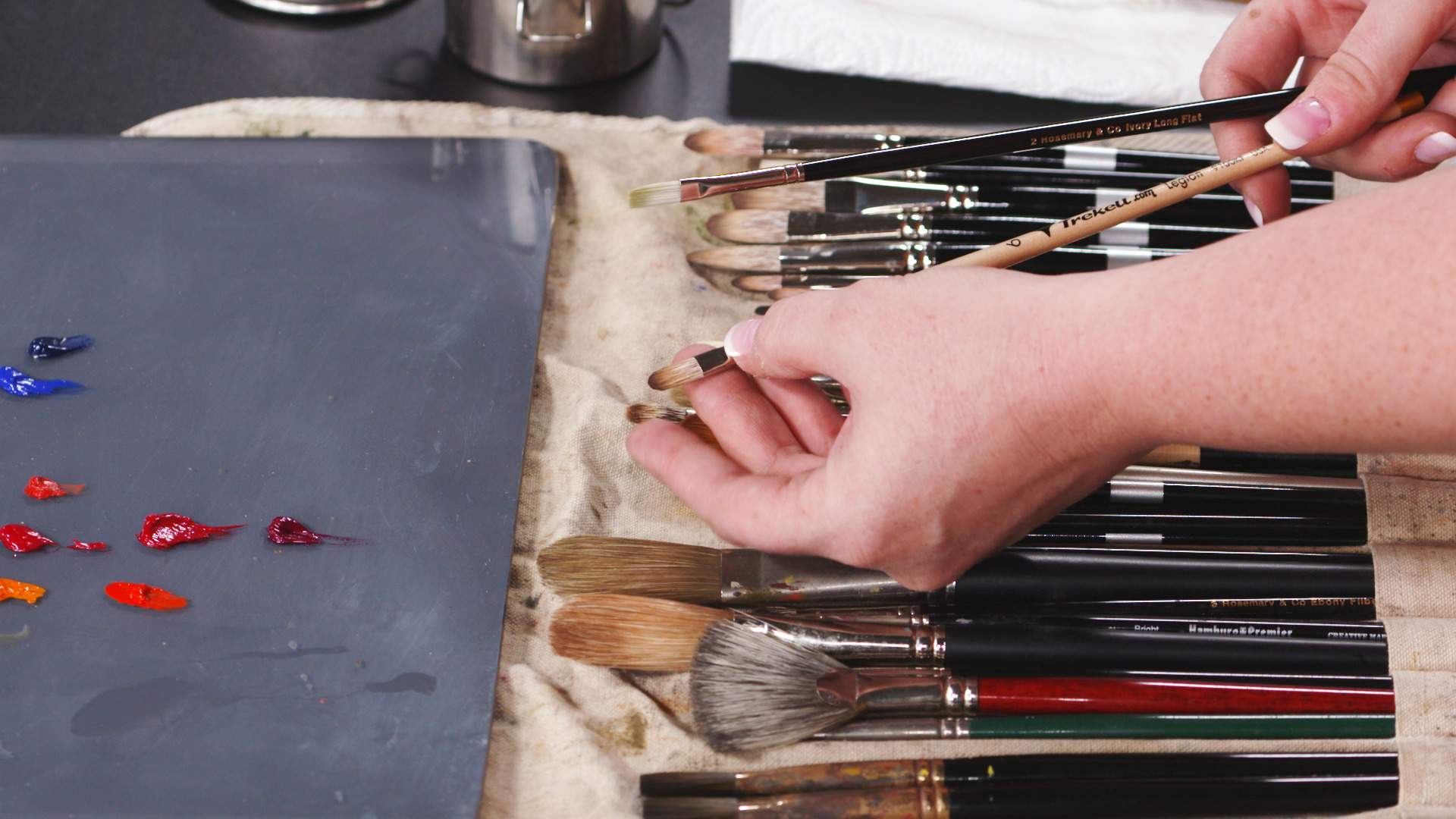
Oil Painting Brushes
Katie Liddiard
Description
Katie tends to go for synthetic bristles, she says, although there are many natural bristle options, both soft and coarse. Hog-hair brushes can feel rough, and are good for holding a lot of paint or painting thick paint passages. Sable brushes, with very soft natural bristles, are best for fine details and delicate blending. Synthetic bristles, which combine the stiffness of hog-hair brushes and the softness of sable, hold a lot of paint and make it easy to blend paint artfully.
You’ll also want to consider brush shape, which can affect brushstrokes. Filberts, which are flat brushes with rounded tips, create soft strokes and are versatile and great for blending. Flat brushes, with their squared-off tips, are excellent for strong, bold marks. Fan brushes can soften edges beautifully. Egbert brushes, which are like elongated filberts with similar rounded tips, give you a long stroke and can be loaded with paint. Versatile round brushes come to a point and make broad or pointed strokes. Katie uses smaller rounds for detailing at the end of a paintings. Some artists love rounds for all-around painting, while filberts are Katie’s go-to for general painting. With these guidelines, try different brushes and see what works for you.